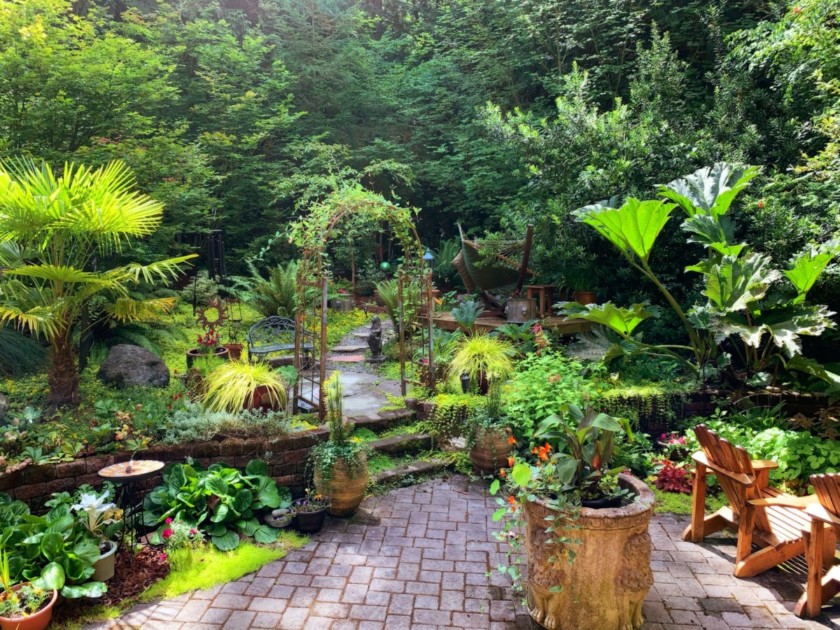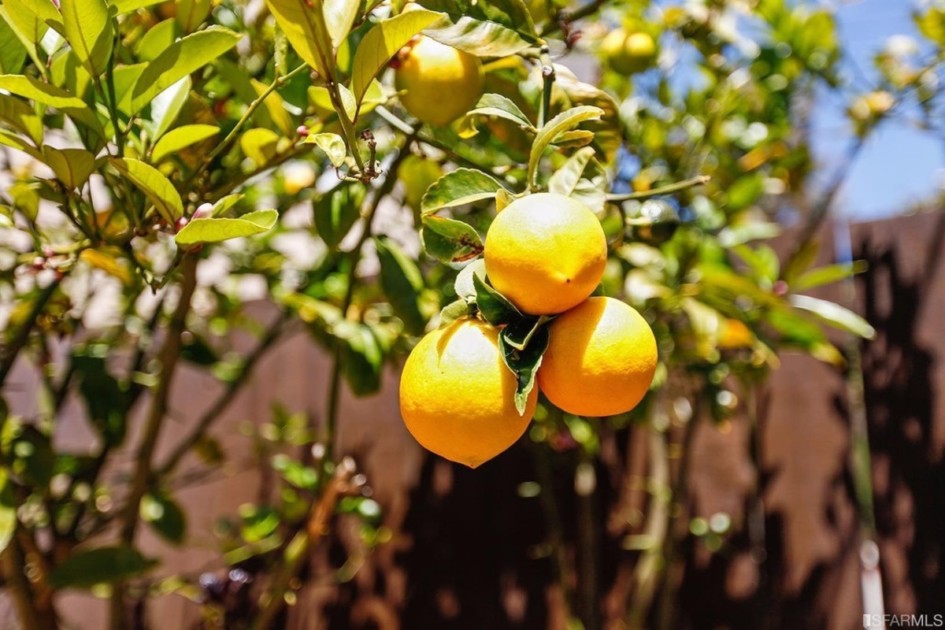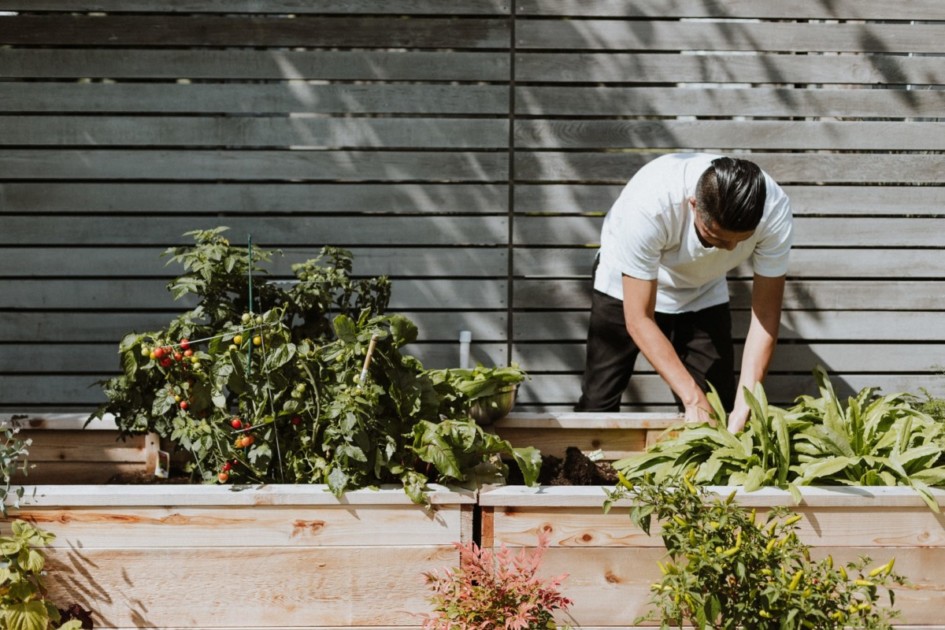Spring is officially here, which means many gardeners are well on their way to creating their garden space. So what are the most common spring gardening ideas and trends of 2022? We unearthed some ideas straight from the experts that you’ll see sprouting up this year.
With so many different types of gardens to choose from, it can be difficult to know where to begin. Whether you live in Charleston, SC and want a lush flower garden in your backyard, or live in Portland, OR and want an edible garden to grow your own zucchini, tomatoes, and herbs, there’s a style out there for you. Here are 2022’s best spring gardening ideas and tips on how to achieve them for your home.

Spring gardening ideas for 2022:
Consider adding felt to your vertical garden
Vertical gardens growing in woven felt materials become living architectural elements that enhance the experiential value of a space. Clients get so excited to transform their homes and workspaces into gardens that make healthy air and bring a sense of calm tranquility to their lives. Our go-to vertical gardening system is Florafelt because it is so versatile plants can grow unrestricted into the hydroponic materials to become a living ecosystem. With the changeable planting grid, you can explore almost any plant material and it’s made entirely from recycled plastic water bottles. Even a vertical garden will greatly benefit by constantly changing and evolving under expert care. Trimming back growth or adding some new understory plants to add a deeper dimension to our works. Automatic irrigation takes care of watering, and we add a level of feeding to bring out the natural beauty of plants and encourage flowering to bring surprises of color and delightful aromas. – Living Green Design
Incorporate container flowers for your entryway
A great way to brighten up any entryway or patio area is with container flowers. There are a variety of styles of containers from ceramic, wood, plastic, and stone. The key is to use good container potting soil – there are great options at most greenhouses. There are numerous flowers you can use However, it’s important to determine if the area is mostly sun or mostly shade before deciding what flowers to use. Container design should include a thriller, filler, and spiller. An example of this would be a Dracaena Spike in the middle, Geraniums and Marigolds around the spike, and Petunia waves around the edges to cascade over. – Amy Clements, owner of Amy’s Gardening Services
From useless to fruitful
In an effort to be more self-sufficient, offset the rising food costs, and utilize wasted space, my husband and I decided to try planting a veggie garden in the unused space behind our garage. I planted an herb garden closer to the house in a small plot of negative space between our fence and deck. Not only did we enjoy checking our bounty each day, but it was so much fun to work together to learn how to make our own pickles, tomato sauces, and pickled beets (my husband’s favorite), all enhanced by our own garlic and herbs. It’s been a blessing having a pantry full of flavorful sauces, dried herbs, and more, all winter long. – Discover Upstate NY
Fruit trees are the gift that keeps giving
For us, growing your own fruit trees is a gardening trend that keeps on giving. We grow our own lemons in a container on our front porch. There really is nothing more satisfying than making a delicious lemon pound cake or a cool glass of lemonade with your own lemons. If you’re looking to grow a lemon tree, we’d definitely suggest giving it a ton of sunlight and slightly acidic, well-drained soil. – The Magnolia Company

Install a cork vertical garden
Vertical gardens are a great way to add green to any space, The Cortiça 32 Cork Living Wall System, a modular indoor/outdoor living wall system that uses natural cork, makes it easy for anyone to install. Find a system that is perfect for both indoor and outdoor spaces and can be used in commercial or residential settings. – Cortiça Garden
Get creative with your vertical garden
Be creative when selecting materials and techniques for your vertical garden – think beyond premade trellises, netting, or bamboo poles. Using livestock fence panels, for example, can be a quick way to build a sturdy vertical structure for many crops in rows. Once established, continue to weave the stems up, otherwise the vines may not weave on their own. Be sure to keep the plants watered and fertilized. One of the main benefits of vertical gardens, besides being an easy and great way to harvest, is the decrease in diseases from the soil and air circulation. Growing upward can help make the most of your gardening space by tapping the potential of the vertical space above your garden plot or container gardens. Gardening in all three dimensions increases the growing area available, increasing the yield potential for gardens of all sizes. – All America Selections
Maximize the number of plants you can grow
Vertical gardens are a great way to maximize the number of plants you can grow, especially in smaller spaces. Even in a space as small as an apartment balcony, you can still grow a variety of plants. You can also maximize the sunniest indoor areas of your home by choosing a vertical garden, with quite a few options available. Whether you’re building a large structure from scratch or simply hanging clay pots on a wall using pot clips, there are vertical garden DIYs for every skill level. Whichever approach you choose, try to position the plants on top of one another instead of staggering them. That way, when you water the plants on top, the excess water will drain out of the pot’s holes and water the plant below it. – By Brittany Goldwyn
A combination of vegetable and flower gardens
Place herb and vegetable containers close to the kitchen so you can gather ingredients like cherry tomatoes, tarragon, chives, and cucamelons when making dinner. Other popular ideas are planting peonies, dahlias, roses, and hydrangeas. Shade and woodland gardening also has a lot of potential and isn’t as difficult as it seems. – Andrew Maynard, Head Gardener at Fauntleroy Gardening Co.

Use less space and create a beautiful retreat
Vertical gardens have a lot of benefits. They provide more greenery while using less space because they grow vertically rather than horizontally. Vertical gardens also add beauty, coziness, and privacy to your space. Growing vining plants vertically also allows for better air circulation around the plants. This will prevent fungus and disease from stagnant water on leaves. – Vinayak Garg, Founder of Lazy Gardener
Opt for a biophilic green wall
Vertical gardens are an innovative and non-traditional way to grow more plants with less space. Biophilic green walls are a growing interest in the design world, adding a wow factor to a space without compromising valuable room. There are freestanding and wall-adhered options depending on your flexibility. Freestanding options are utilized as functional furniture as well, while wall-adhered options can cover upwards of 20 feet in height and act as an organic piece of art. Both options can be hand watered and maintained on a weekly basis, but larger green walls are typically tapped into internal plumbing and able to self-water. Plant varieties can vary and be placed thoughtfully to create exciting designs that have a long list of benefits such as increased productivity and a calmer ambiance, while also purifying the air. – McKenzie Schweitzer, Account Executive, Plantscape Live
Vertical gardens have countless benefits
Vertical gardens save space and require less weeding, soil, and effort. They can also be used as a fence or to help hide unsightly views. Because they grow up and not out, they provide much more space to plant a variety of vegetables and plants. – Diane and Dean

 United States
United States Canada
Canada